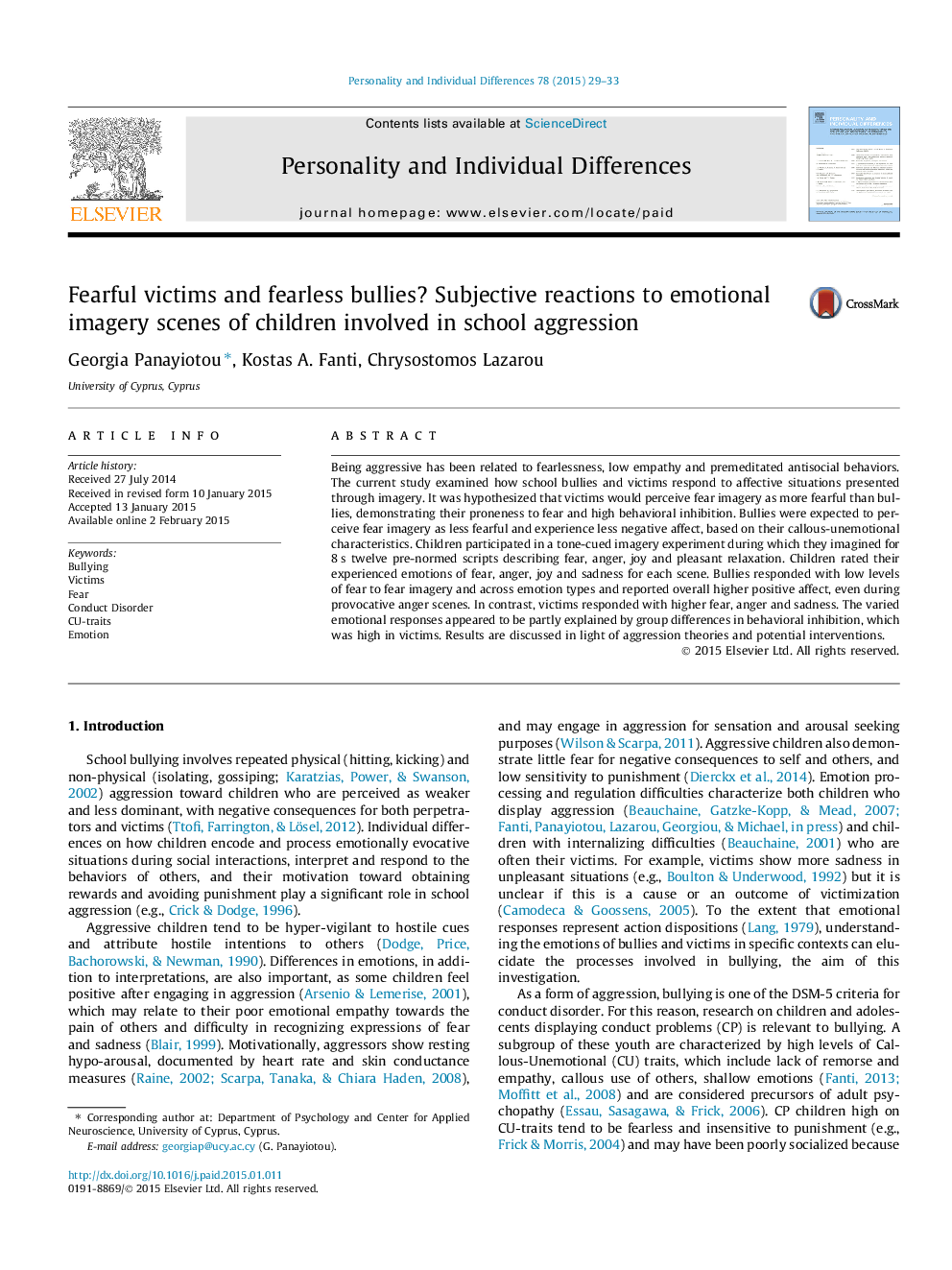| Article ID | Journal | Published Year | Pages | File Type |
|---|---|---|---|---|
| 890175 | Personality and Individual Differences | 2015 | 5 Pages |
•Bullies and victims may respond differently to emotional contexts.•School bullies and victims engaged in emotional imagery rating their responses.•Victims reported with overall more fear and negative emotions.•Bullying was related to less fear and more joy even during anger scenaria.
Being aggressive has been related to fearlessness, low empathy and premeditated antisocial behaviors. The current study examined how school bullies and victims respond to affective situations presented through imagery. It was hypothesized that victims would perceive fear imagery as more fearful than bullies, demonstrating their proneness to fear and high behavioral inhibition. Bullies were expected to perceive fear imagery as less fearful and experience less negative affect, based on their callous-unemotional characteristics. Children participated in a tone-cued imagery experiment during which they imagined for 8 s twelve pre-normed scripts describing fear, anger, joy and pleasant relaxation. Children rated their experienced emotions of fear, anger, joy and sadness for each scene. Bullies responded with low levels of fear to fear imagery and across emotion types and reported overall higher positive affect, even during provocative anger scenes. In contrast, victims responded with higher fear, anger and sadness. The varied emotional responses appeared to be partly explained by group differences in behavioral inhibition, which was high in victims. Results are discussed in light of aggression theories and potential interventions.
